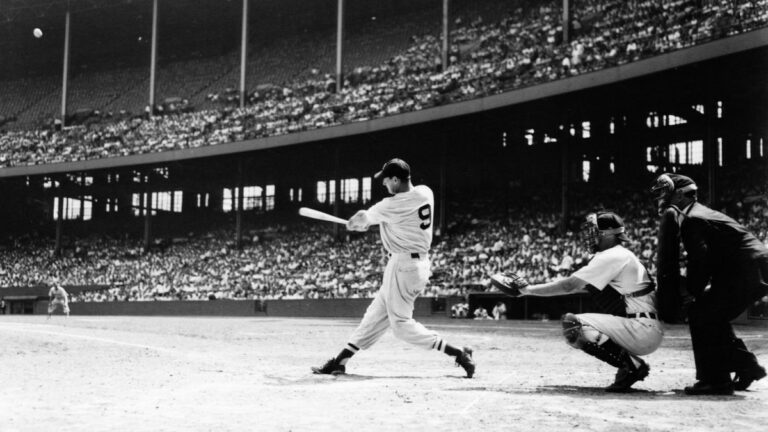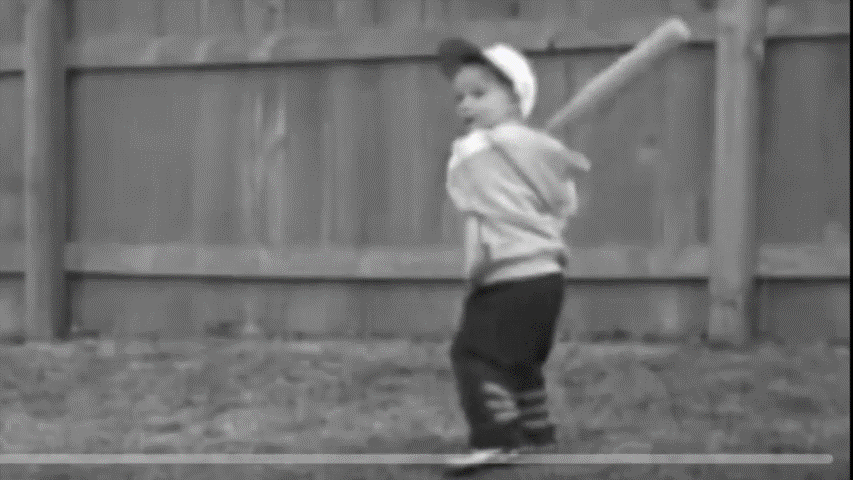
The Missteps of Mimicking Great Swings
By Ken Cherryhomes
Introduction
Hitting a baseball is hailed as the most challenging feat in sports. Hitting the ball well demands a blend of mechanics, timing, and intent. While we can observe certain mechanical similarities among great hitters, the temptation to identify a singular pattern and impose a “cookie-cutter” approach to training swings based on these observations overlooks the nuance of hitting. This article explores the interplay of mechanics, intent, and timing—focusing on why timing remains the most objective and arguably most important aspect of hitting.
Mechanical Similarities and the Limits of Observation
Identifiable Similarities
Great hitters exhibit common traits in their mechanical execution, not because of a “magical” formula or secret solution, but because they are solving the same problem under the same constraints. There are only a limited number of movement options available to achieve the task of hitting a ball in flight within the constraints of time and space. This phenomenon—where athletes converge on similar solutions to the same problem—is rooted in biomechanics and motor control principles. Given the constraints of reaction time, pitch velocity, and spatial demands, great hitters adopt similar movement strategies because the options for success are finite.
Identifiable Similarities
These limited options lead to observable traits that are governed by physics. These include:
- Efficient Energy Transfer: The ability to convert kinetic energy from the ground, through the body, and into the bat.
- Bat Path: A trajectory through the hitting zone that maximizes contact probability.
- Balance and Stability: Dynamic balance that allows for adjustability while maintaining control over swing direction.
These traits are universal because they align with the fundamental objective of hitting: making solid contact with a moving ball.
The Problem with a Cookie-Cutter Approach
Despite identifiable similarities between all great hitters, ignoring or underestimating the impact of the unique traits of individual hitters highlights the pitfalls of a one-size-fits-all training approach:
- Variability in Body Mechanics: Anatomy, strength, flexibility, and athleticism vary significantly from player to player.
- Individual Swing Philosophies: Some hitters prioritize power, while others focus on contact or situational hitting.
- Pitch-Specific Adjustments: The bat’s path is not fixed; it changes dynamically based on pitch type, location, and velocity.
Swing path dissimilarities can also be influenced by hardwired behaviors such as fine motor skill dominance over gross motor skill dominance. For example, you cannot compare the swing of Ted Williams, who was gifted with elite fine motor skills, with another hitter who is not as gifted or is not fine motor dominant. While you may be able to compare points of impact or the end result, expecting to replicate the approach to impact without considering these individual traits is unrealistic.
Training hitters to mirror the mechanics of “great hitters” ignores these variables. A swing that works for one player may not be optimal for another due to differences in physical attributes, mental processing, and intent. The cookie-cutter approach risks creating mechanical constraints that stifle individual strengths.

A Case Study in Natural Motor Planning
The swing of this 2-year-old child provides a perfect illustration of the natural, subconscious motor planning that underpins elite hitting mechanics. Untrained and too young to comprehend coaching, the child emulates an efficient swing plan through pure observation and innate motor control.
What makes this swing remarkable is how it demonstrates the core principles of hitting, all without intervention:
- Accurate Timing Solution: The child predicts the arrival of the ball and launches the swing at the perfect moment, solving the temporal-spatial intersection problem with precision.
- Barrel Plane Matching the Pitch Path: Rather than creating an artificial loop or steep swing path, the child naturally aligns the bat’s plane to the pitch trajectory, achieving lift without sacrificing consistency.
- Stable Rotation and Balance: The swing rotates around a stable axis, with the head remaining steady. The three segments of the kinetic chain—lower body, torso, and arms—work both independently and symbiotically, transferring energy efficiently through the swing.
- Intent for Lift: The child not only intersects the ball but achieves lift, reflecting an intent beyond simple contact. This is accomplished through natural timing and barrel alignment, not by forcing a steep upward swing path.
This swing highlights a critical truth: the human motor system is inherently capable of solving complex movement problems efficiently once the temporal and spatial problem is solved. With no formal coaching or conscious instruction, the child’s brain creates an elite motor plan that prioritizes:
- Intersection as the primary objective.
- Lift as a natural outcome of intent and precise mechanics.
The efficiency of this swing mirrors the principles seen in great hitters: balance, timing, energy transfer, and bat path alignment. It rejects unnecessary steepness or overcomplication, reinforcing that the brain instinctively favors logical, efficient solutions when solving the task of hitting.
This example serves as a powerful reminder of how the motor system self-organizes under task constraints. It is a testament to the importance of allowing hitters the freedom to develop natural, effective movement patterns rather than imposing mechanical overcorrections that disrupt efficiency.
Why Comparing Swings is Complex
Intent and Control
The ability to observe a hitter’s mechanics does not provide insight into their intent or control in a given scenario. For example:
- Controlled Intent: This is not limited to a hitter like Ty Cobb, who might focus on precision and adjustability, manipulating barrel speed mid-swing to maintain contact. A powerful hitter like Barry Bonds or Mark McGwire could also exhibit controlled intent. When seeing the ball well and creating ample time to plan, they applied their intent with maximum effort while maintaining precision and consistency. These hitters’ swings were neither “running into the ball” nor selling out for power; their results were a product of skill, not luck.
- Fully Committed Effort: A hitter like Babe Ruth might prioritize maximizing power, committing fully to a powerful swing that leaves little room for adjustment.
Hitters like Barry Bonds, Albert Pujols, or Ted Williams demonstrate how controlled intent can coexist with powerful, high-effort swings. Their ability to combine consistency with power—hitting for high average and low strikeouts—reflects a mastery of timing and control that separates them from hitters relying on chance or brute force.
Without understanding the hitter’s intent, comparing swings can lead to misleading conclusions. What appears as a mechanical flaw in one context may be a deliberate adjustment in another.
Misunderstanding Metrics: Attack Angles and Swing Paths
The tendency to focus on singular, measurable metrics—such as the optimal attack angle for maximum flight distance (commonly cited as 18°)—often leads to flawed conclusions. This oversimplification arises from a failure to account for the interplay between swing paths, collision offsets (tangential collision measurements), pitch locations, and the complex physics of bat-ball collisions.

Attack Angle vs. Swing Path
- Attack Angle: An instantaneous measure of the bat’s direction at the precise moment of contact.
- Swing Path: The prolonged trajectory of the bat as it moves through the hitting zone.
While the identified 18° attack angle may produce optimal ball flight distance under controlled conditions, this measurement fails to address the real-world variability of hitting, where swing path dynamics and tangential collisions play a dominant role in determining launch angles.
The Critical Role of Tangential Collisions
Optimal launch angles are not solely a product of steep attack angles. Instead, they depend on the offset point of the collision—the precise point where the bat makes contact with the ball:
- Tangential Collision Offsets: By striking just below the center of the ball, hitters generate backspin, which promotes lift and efficient ball flight. Backspin can be achieved with lower attack angles that better align with the pitch plane. This approach increases consistency in achieving optimal launch angles while avoiding unnecessary swing steepness.
- The Interplay Between Path and Offset: A hitter’s swing path need not match the exaggerated upward trajectory often pursued in modern hitting philosophies. Even at lower attack angles, slight offsets in the tangential collision can produce similar or better outcomes.
The misconception is that achieving an 18° attack angle requires a steep upward swing path. In reality, lower attack angles—combined with precise collision offsets—are more efficient and consistent for producing ideal launch angles.
Why Steep Swing Paths Fail
Prolonged, steep upward swing paths inherently reduce consistency and produce counterproductive outcomes:
- Reduced Contact Window: A steep upward path minimizes the bat’s time in the hitting zone, narrowing the window for timing and pitch plane alignment.
- Increased Likelihood of Ground Balls: The intent to elevate the ball often backfires. When the bat misses its intended offset and strikes above the center of the ball or even the center of the ball, the result is topspin-driven ground balls, not fly balls.
- Weak Fly Balls: Conversely, excessive steepness often leads to weak pop-ups when the bat strikes too far below the ball’s center.
- Higher Whiff Rates: Steeper swing paths exacerbate timing challenges, increasing the likelihood of completely missing the ball. This is particularly true against high-velocity pitches or breaking balls, where the steep path amplifies timing errors.
In all these cases, the swing fails to generate the consistent backspin necessary for optimal launch angles. By reducing the adaptability of the swing and increasing the margin for error, steep paths compromise both contact frequency and quality.
The Role of the Natural Bat Arc
The biomechanics of a swing ensure that all bat paths—regardless of their initial approach angle (flat, level, or downward)—eventually ascend through the hitting zone due to the natural arc of the bat’s motion. This upward motion produces upward attack angles over time without artificial steepening.
Attempting to force a steep swing path to achieve an 18° attack angle ignores two key realities:
- Alignment with the Pitch Plane: Proper swing path adjustments that match the downward trajectory of most pitches (typically ~6°) naturally promote efficient backspin and loft.
- Tangential Collision Offsets: Consistent, slight offsets below the ball’s center are the real drivers of optimal launch angles, not exaggerated attack angles.
Overemphasizing steep attack angles disrupts a hitter’s adaptability, leading to more frequent ground balls. Weak flyballs and inconsistent results.
Key Takeaway
Optimal launch angles are best achieved through a combination of:
- Lower, More Adaptable Attack Angles: These increase the bat’s time in the hitting zone, improving timing and consistency across various pitch types and velocities.
- Precise Tangential Collision Offsets: Slightly offsetting the bat below the center of the ball generates the backspin necessary for lift and distance without requiring artificially steep attack angles.
- Natural Swing Path Mechanics: The bat’s natural arc will ascend through the zone, eliminating the need for steep paths. Proper alignment with the pitch plane enhances both consistency and quality of contact.
Additionally, pitch selection and swing intent significantly influence how attack angles interact with pitch location:
- Inside Pitches: Pitches met farther forward in the hitting zone naturally align with the bat’s ascending arc, often arriving at or near the optimal attack angle of 18°. This makes inside pitches more conducive to achieving higher launch angles without major swing path adjustments.
- Middle Pitches (to Centerfield): Pitches over the plate or swings aimed toward centerfield are met farther back in the zone. When attempting to achieve an 18° attack angle on these pitches, the bat’s arc is still rising but has less momentum. Forcing a steeper swing path to meet this target creates several dangers: Increased Ground Ball Risk: The steeper path results in topspin-driven contact if the bat meets the lower portion of the ball too late. Weak Fly Balls: The bat’s upward trajectory at this point lacks optimal collision physics to drive the ball with sufficient backspin. Timing Sensitivity: Middle pitches hit toward centerfield require precise timing to align the bat’s natural arc with the ball. Aiming for 18° attack angles on these pitches narrows the margin for error, leading to inconsistency and more frequent mis-hits.
- Outside Pitches: Pitches farther back and away from the hitter exacerbate the challenges of achieving consistent attack angles. Forcing the bat to loop earlier to reach an 18° attack angle increases swing variability and compromises timing adaptability.
The Availability Heuristic and Post Hoc Fallacy
The tendency to focus on observable similarities while ignoring dissimilarities often results in the availability heuristic:
- Coaches may observe that great hitters share traits like early hip rotation or certain bat angles at contact.
- They may conclude, post hoc, that replicating these traits will lead to success.
However, this reasoning ignores the broader context. Dissimilarities—such as individual timing strategies, adjustments to pitch location, or unique body mechanics—play equally crucial roles. By focusing solely on similarities, coaches risk oversimplifying the complex interplay of factors that contribute to successful hitting.
The fixation on fixed metrics like attack angle is a prime example. Without considering the broader physics of bat-ball interaction, swing paths, and pitch dynamics, this approach leads to an unrealistic, oversimplified model for hitting success.
Timing: The Universal Thread
While mechanics and intent vary widely, timing is the single common thread among all successful hitters. Regardless of their approach, hitters must align their swing decision with the pitch’s trajectory and speed. Timing transcends mechanical differences and provides a more objective framework for training.
The Observable Nature of Timing
Timing can be broken into three key components:
- Pre-Swing Timing: The initiation of the load and stride relative to the pitch’s release.
- In-Swing Timing: The synchronization of the bat’s path with the pitch’s trajectory.
- Contact Timing: The precise moment when the bat meets the ball.
These aspects of timing can be measured and adjusted more reliably than swing mechanics, making timing a practical focus for training.
Approaches to Timing
- Controlled Hitting (Guided by Online Control): Hitters like Ty Cobb, Tony Gwynn and Ichiro Suzuki employed a strategy of entering the hitting zone early and adjusting barrel speed mid-swing based on real-time perception. This approach emphasizes adaptability, allowing for fine-tuned adjustments to pitch velocity and location. It sacrifices raw power for consistent contact and situational success.
- Fully Committed Effort (Power-Intention Approach): Hitters like Babe Ruth relied on anticipatory timing, committing fully to a powerful swing. This approach maximizes exit velocity but leaves little room for mid-swing adjustments. It is ideal for generating extra-base hits but carries a higher risk of swing-and-miss outcomes.
Why Timing is the Focus
Fewer Options for Optimal Timing
While there are countless mechanical variations among hitters, the options for achieving optimal swing timing are far more limited. Timing is dictated by the pitch’s velocity, trajectory, and location—factors that every hitter must respond to in similar ways. This universality makes timing:
- Objective: Timing can be measured, analyzed, and trained without subjective bias.
- Foundational: Even the best mechanics fail without proper timing.
- Simpler to Optimize: Focusing on when to swing narrows the variables compared to how to swing.
Training Timing Over Mechanics
Training timing addresses the root cause of many hitting issues:
- Hitters who struggle with late swings or early commits often fail due to poor timing, not poor mechanics.
By prioritizing timing, hitters can:
- Improve both controlled and committed approaches.
- Develop a reliable framework for adapting to different pitch speeds and trajectories.
- Focus on the most critical determinant of success at the plate.
Conclusion
Hitting is an art as much as a science. While mechanical similarities among great hitters provide valuable insights, they should not dictate a one-size-fits-all approach to training. Intent, control, and situational context create significant variability that cannot be ignored and often times, cannot be replicated.
Timing, however, remains the universal common thread. By focusing on timing—the most objective and foundational aspect of hitting—coaches and hitters can simplify the complexities of swing mechanics, adjust and optimize naturally and maximize performance. Whether through controlled adjustments or fully committed swings, optimal timing bridges the gap between intent and execution, unlocking the true potential of every hitter.
